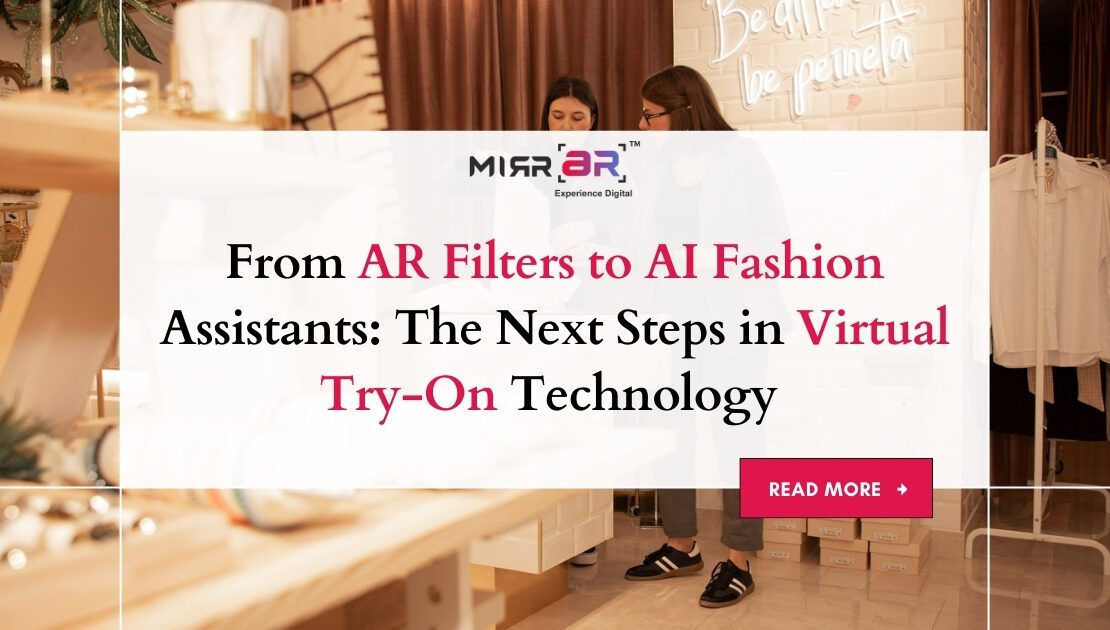
In the ever-evolving landscape of fashion retail, technology continues to reshape how consumers interact with products and make purchasing decisions. Among the most revolutionary advancements is Virtual Try-On (VTO) technology, which has transformed from fun augmented reality (AR) filters to sophisticated AI-powered fashion assistants. This shift marks a new era in fashion commerce—one that is more interactive, personalized, and efficient than ever before.
The Rise of AR Filters in Fashion
Initially, Virtual Try-On technology gained popularity through AR filters—those playful Snapchat and Instagram overlays that allowed users to try on sunglasses, lipstick, and other fashion items virtually. These filters were game-changers for beauty and accessories brands, enabling customers to visualize products on themselves without setting foot in a store. AR filters bridged the gap between digital content and real-world shopping, driving engagement and offering a novel way to test products.
However, while AR filters were excellent for experimentation and entertainment, they were limited in realism, scalability, and product variety. Consumers wanted more than a fun visual; they sought accurate sizing, texture representation, and personalized recommendations—capabilities that basic AR could not deliver.
Enter AI: Personalization at Its Peak
The integration of Artificial Intelligence (AI) into Virtual Try-On systems elevated the technology from gimmicky to game-changing. AI enables a deeper understanding of customer preferences, body types, and shopping behavior. By analyzing vast datasets, AI can recommend clothing styles, sizes, and fits that align with the shopper’s tastes and physical attributes.
This is where platforms like MirrAR stand out. Leveraging both AR and AI, MirrAR enables luxury and fashion brands to offer a hyper-personalized shopping experience. AI-driven fashion assistants can now suggest full outfits, adapt to seasonal trends, and even align recommendations with a customer’s browsing and purchase history—all in real time.
Enhanced Realism: From Flat to Photorealistic
One of the biggest challenges in early VTO was realism. Customers could “try on” items, but the representation often lacked accuracy in fit, drape, and lighting. Today, with the power of AI and 3D modeling, VTO technology can create highly realistic renderings of garments and accessories. The technology understands fabric flow, texture, and how a piece interacts with different body types and movements.
Virtual fitting rooms now simulate true-to-life visuals, giving users a clear and confident understanding of how a product will look and feel. For brands, this means fewer returns, higher customer satisfaction, and increased brand loyalty.
Omnichannel Integration: Seamless Shopping Experiences
Another leap forward in VTO tech is its integration across multiple platforms—websites, mobile apps, in-store smart mirrors, and even metaverse environments. Retailers can now deliver consistent experiences across digital and physical touchpoints. For instance, a customer might use a MirrAR smart mirror in-store, try on a look virtually, and then revisit that same look at home on their phone before purchasing.
This omnichannel approach not only boosts convenience but also ensures brand consistency. It meets consumers wherever they are in their shopping journey—whether online or offline—and guides them toward confident purchases.
The Rise of AI Fashion Assistants
AI-powered fashion assistants represent the next evolutionary step. These digital stylists learn from user interactions, fashion trends, and social media cues to suggest curated wardrobes. They offer styling tips, alert users to new arrivals that match their preferences, and even provide sustainability ratings or alternative ethical brands.
Imagine logging into your favorite luxury fashion app and having an AI assistant greet you with personalized outfit options for an upcoming event—styled based on your past choices, current fashion trends, weather forecasts, and even color psychology. This level of personalization was once exclusive to high-end personal shoppers, but AI is democratizing it for every customer.
Also Read: How Virtual Try-On is Helping Luxury Brands Navigate the Post-Pandemic Retail Landscape
Boosting Sustainability in Fashion
Another important benefit of advanced VTO technology is its role in sustainability. By reducing the need for physical samples and decreasing product returns, VTO contributes to a more eco-friendly retail ecosystem. Brands can test new collections virtually before mass production, gauging customer interest without the environmental cost of overproduction.
Platforms like MirrAR are at the forefront of this movement, empowering fashion houses to adopt digital-first strategies that are both profitable and sustainable. It’s a win-win for the planet and for the industry.
What’s Next?
As we look ahead, the future of Virtual Try-On is set to become even more immersive and intelligent. Developments in haptic feedback could one day allow users to “feel” fabrics digitally. Integration with blockchain could provide digital twins for every item tried on, ensuring authenticity and traceability. AI will continue to evolve, possibly predicting not only what you want to wear—but what you should wear based on biometric data, cultural cues, and lifestyle.
Virtual fashion shows, metaverse shopping malls, and AI avatars might sound futuristic, but they’re already in motion. At the heart of this digital revolution lies Virtual Try-On technology—bridging the gap between imagination and reality in fashion retail.
Conclusion
From playful AR filters to intelligent AI fashion advisors, Virtual Try-On technology has come a long way—and it’s just getting started. For fashion brands aiming to stay competitive, adopting advanced VTO platforms like MirrAR isn’t just an option—it’s a necessity. As consumers demand more personalized, sustainable, and immersive shopping experiences, brands that lead with tech will lead the market.
The future of fashion is virtual. The future of Virtual Try-On is intelligent. And the future is already here.
